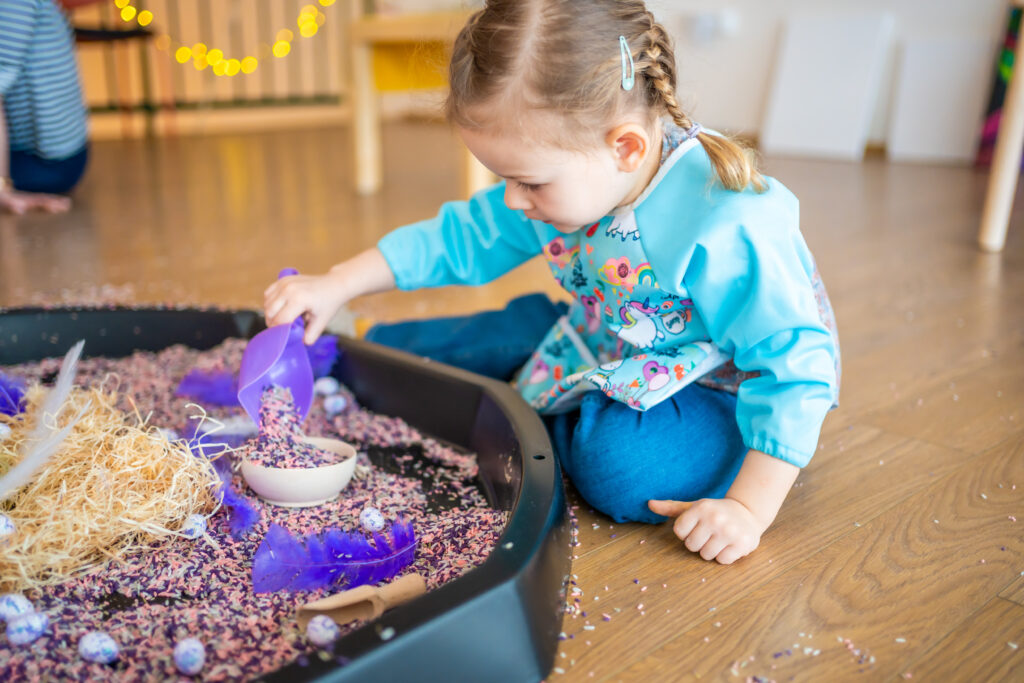
Sensory Bins are utilized in Speech, Occupational and Physical therapy and are a great form of
tactile play for children of all ages to enjoy. They can be made with many household
items to promote functional play, tactile defensiveness, identifying objects such as shapes,
colors, numbers, letters, animals, etc.
What is a Sensory Bin? Sensory bins is a box/container filled with items varying in texture, size,
shape and more to help children explore different types of tactile input. Once filling the bin with
different textures, you can add your child’s favorite toys to promote learning and development.
Occupational therapy benefits: Adding different tools such as shovels, tongs and imitation
scissors can promote grasp development. Tolerating various types of textures can reduce tactile
defensiveness.
Speech Therapy benefits: A sensory bin can be used for labeling items and requesting for
“more” to promote speech development.
Physical Therapy benefits: Adding sensory bins to an obstacle course or sitting on different
surfaces to promote core strength and motor planning.
Some Sensory Bin ideas include:
- Rice
- Beans
- Pom pom/cotton balls
- Sand
- Dried pasta
- Cereal
- Jello
- Split peas
- Salad
- Coffee grinds
- Easter grass
- Sea Shells
- Marbles
- Leaves
- Dirt
- Feathers
- Packing peanuts
- Shaving cream
- Water beads
- Sprinkles
- Ice
- Water
- Snow
- Pudding
And much more! Reminder: sensory bins can contain small items that can cause a child to
choke if consumed. If your child places non-food items into his/her mouth, try food based bins!
Sensory bins can have themes to go with different environments, time of year/weather. Some
ideas include:
- Beach, Ocean, Gardening, etc
- Fall, Spring, Summer and Winter
- Halloween, Christmas, Easter, etc
- Food Themed Bins